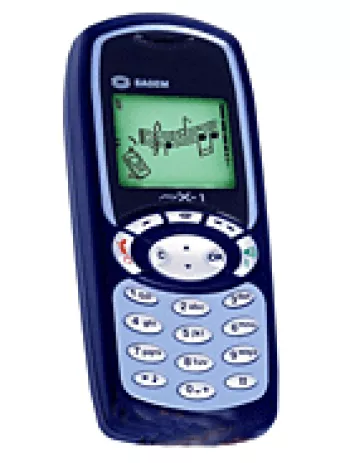
Introduction to Sagem MY V-76
The Sagem MY V-76, released in July 2005, was a feature phone marked by a blend of modest specifications and functional design tailored for basic communication needs. As a product of its time, it catered to users looking for simple mobile connectivity rather than advanced smartphone features. Known for its reliable performance in essential areas, this handset achieved a respectable level of popularity among feature phone enthusiasts.
Network and Connectivity
The Sagem MY V-76 supported GSM technology with 2G bands including GSM 900, 1800, and 1900, covering a wide range of areas for decent call and text operations. While lacking modern data connectivity options like EDGE, it did support GPRS Class 10 for basic mobile internet browsing. Also notable was its Bluetooth 1.2 capability, allowing for simple data exchanges and connection to compatible devices, as well as an infrared port for legacy data sharing methods.
Design and Build
Measuring 110 x 19 x 47 mm and weighing approximately 104 grams, the Sagem MY V-76 was designed with portability in mind. Its compact structure was equipped with a Mini-SIM slot and a relatively lightweight build, making it easy to carry and fit comfortably in pockets or small bags. The design was functional and straightforward, suitable for users who prioritized convenience and simplicity.
Display Features
The device featured a TFT display capable of rendering 256K colors, with a resolution of 176 x 220 pixels. This allowed for a decent visual experience given the phone's market position. The display size offered enough space to navigate through menus, messages, and basic applications without difficulty, although it lacked the touch interaction and high-definition resolution of modern screens.
Camera Capabilities
Equipped with a single 1.3 MP camera, the Sagem MY V-76 offered basic photography capabilities. The inclusion of an LED flash was a practical choice, improving photo quality in low-light conditions. Although not comparable to contemporary smartphone cameras, it was suitable for capturing simple images and recording short videos, providing users with basic multimedia functionality.
Storage and Memory
Internally, the phone had 8MB of storage, a common capacity for feature phones of that era, sufficient for storing contacts, messages, and a limited number of photos or Java applications. The addition of a microSD slot enabled users to expand storage, a valuable feature for those looking to store more data or download additional applets and games.
Sound and Alerts
The sound setup included standard polyphonic ringtones with vibration alerts. Although lacking a loudspeaker and 3.5mm audio jack, it supported downloadable ringtones, allowing users to personalize their notification experiences. The absence of a loudspeaker was a limitation, but the typical usage profile negated the need for advanced audio features.
Communication Features
Messaging options included SMS, EMS, and MMS, supporting text and multimedia communication. A WAP 2.0/xHTML browser offered access to mobile web pages, although with limited functionality compared to modern browsers. Embedded Java MIDP 2.0 support facilitated running simple Java games and applications, enhancing the device's entertainment profile.
Battery and Power Management
The phone was powered by a removable Li-Ion 920 mAh battery, providing up to 350 hours of standby time and up to 4 hours of talk time. This battery life was fairly standard, ensuring that users could maintain communication without frequent charging, a valuable trait for essential mobile operations.
Conclusion
The Sagem MY V-76 represented a transitional phase in mobile phone technology, straddling basic functionality and early multimedia applications. Its robust design, combined with functional features like expandable storage and basic camera options, met the needs of users seeking reliable communication and simple digital interaction. Although technologically modest by today’s standards, it remains a nostalgic piece of mobile history, embodying the early 2000s feature phone era.
Key Features of Sagem MY V-76
- GSM technology with tri-band support (GSM 900 / 1800 / 1900)
- Compact dimensions: 110 x 19 x 47 mm
- Lightweight at 104 g
- TFT display with 256K colors
- Expandable memory via microSD card slot
- 1.3 MP main camera with LED flash
- Bluetooth 1.2 for wireless connectivity
- Infrared port for data transfer
- Support for SMS, EMS, and MMS messaging
- Java enabled (MIDP 2.0) for use with downloadable apps and games
- Removable Li-Ion 920 mAh battery with up to 350 hours standby time
- Sleek Silver color design
Sagem MY V-76 Disadvantages
- Lacks EDGE support for faster 2G data speeds.
- Discontinued device, limiting support and updates.
- No 3G or 4G connectivity, offering only basic GSM functionality.
- No WLAN capability for wireless internet connectivity.
- Absent GPS positioning feature.
- Does not have a 3.5mm audio jack.
- No built-in radio functionality.
- Limited internal memory of 8MB.
- Lack of a loudspeaker.
- Absence of a front-facing selfie camera.
- Basic 1.3 MP main camera by modern standards.

View Also
More Phones
All Rights Reserved +13916 Phones © Mobilawy 2025

























